Day 5 - County Cork
It is day five of our expedition and today we take leave of the fair City of Dublin and head south to County Cork and it’s largest city, Cork. Though it rained overnight, our departure was met with blue sky and large, billowing white clouds. As we started south, all the troupe was in good cheer and ready for more adventures.
Our first stop was a visit to St. Canice’s Cathedral in Kilkenny, Co. Kilkenny. In the Irish it is Cill Chainnigh, which t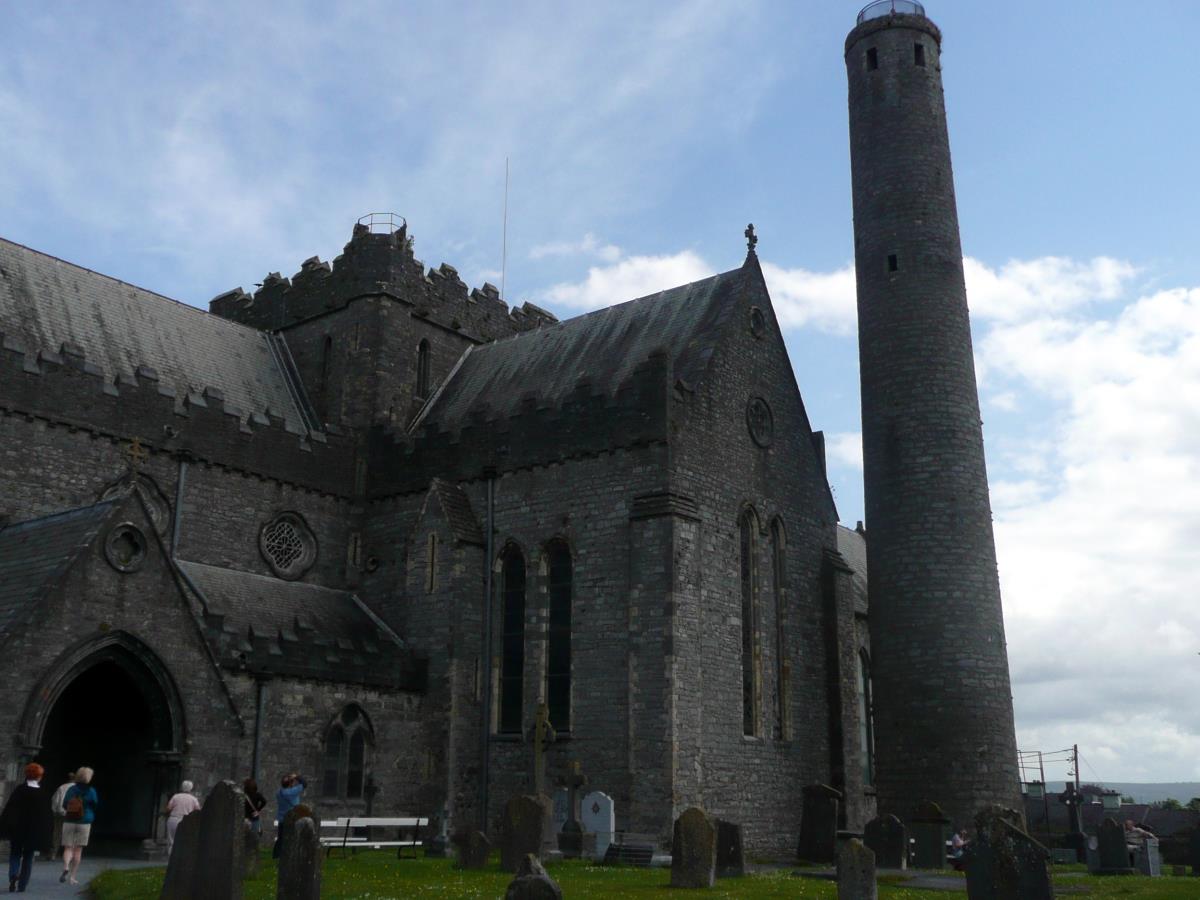 ranslates as "Church of Cainneach", or Canice. As with many of the older churches in Ireland, St. Canice’s is actually Protestant and is the seat of the Anglican Bishop of Cashel and Ossory. Though these churches were constructed as houses of Catholic worship, they were taken over by the Protestants during the Reformation. When Catholicism once again became the Irish national religion, new Catholic churches and cathedrals were constructed. St. Patrick’s in Dublin is one of the few remaining ancient Catholic cathedrals.
ranslates as "Church of Cainneach", or Canice. As with many of the older churches in Ireland, St. Canice’s is actually Protestant and is the seat of the Anglican Bishop of Cashel and Ossory. Though these churches were constructed as houses of Catholic worship, they were taken over by the Protestants during the Reformation. When Catholicism once again became the Irish national religion, new Catholic churches and cathedrals were constructed. St. Patrick’s in Dublin is one of the few remaining ancient Catholic cathedrals.
St. Canice’s includes a 36 yard high bell tower. As in Glendalough, it is believed the tower was used as a watch-tower and bell tower. There has been a church on this spot since around the 6th century, while the bell tower dates from the 9th century and the current church structure from the 13th century.
As we approached the Cathedral, our coachmen, one Nigel Murray, related to us the tale of the Witch of Kilkenny which I will attempt to retell to you. Lady Alice, who had been thrice married, was married to Sir John le Poer. Her three previous husband all had one thing in common - they all died young and the all died mysteriously.
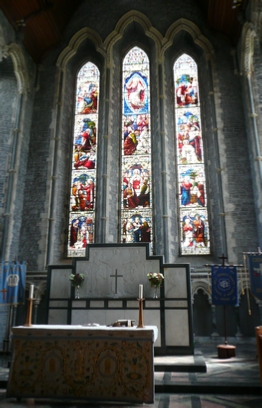 In 1824, Sir John began to suffer from a wasting disease that caused his hair to fall out and his finger and toe nails to come out. There had also been rumors that Lady Alice had practiced in the black arts of witchcraft. The step children from her previous marriages suspected foul play and went to Sir John. When he confronted her and demanded the keys to her chambers, she refused to hand them over. Taking them by force, he discovered chests of evil smelling liquids and what appeared to be powdered bones.
In 1824, Sir John began to suffer from a wasting disease that caused his hair to fall out and his finger and toe nails to come out. There had also been rumors that Lady Alice had practiced in the black arts of witchcraft. The step children from her previous marriages suspected foul play and went to Sir John. When he confronted her and demanded the keys to her chambers, she refused to hand them over. Taking them by force, he discovered chests of evil smelling liquids and what appeared to be powdered bones.
He sent the evidence to the Bishop of Ossary along with a letter from her step children accusing her of consorting with the devil. This being the time of the Holy Inquisition, she was quickly arrested along with others including her maid, Petronella de Meath. Lady Alice was able to make her way to England (her escape was not explained) where she ended her days in peace.
However, the Church demanded it’s pound of flesh and so chose poor Petronella to place on trial in her stead.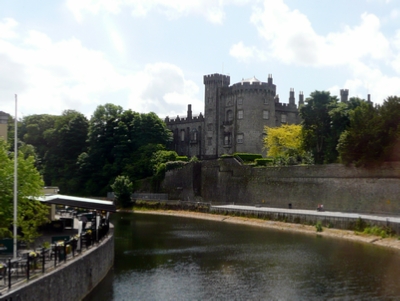 Under extreme torture, she confessed to being a witch also. She was whipped six times through the streets of Kilkenny and then burned at the stake in the presence of a large crowd.
Under extreme torture, she confessed to being a witch also. She was whipped six times through the streets of Kilkenny and then burned at the stake in the presence of a large crowd.
Well, on leaving St. Canice’s, we proceeded on to the wonderful Kilkenny Castle, in the Irish, Caisleán Chill Chainnigh. Located in Kilkenny, the castle was build in 1195 to control the River Nore. It was originally constructed by the Earl of Pembroke, but was sold to the Butler family in about 1381.
In the 20th century, upkeep of the castle became so great that the Butler family sold its contents for the sum of £6,000. Debts continued to mount and, in 1967, Arthur Butler, 6th Marquess and 24th Earl of Ormonde, sold the abandoned and deteriorating castle to the Castle Restoration Committee for £50. Easy come, easy go, as I always say.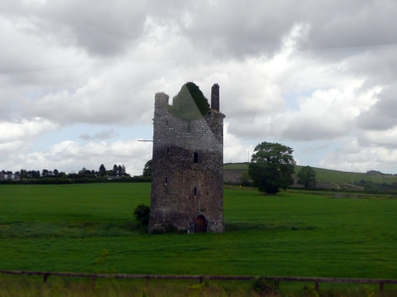
From Kilkenny, we made our way onward to Cork. As we motored along we passed one of the may ruined towers built by the Normans in the 14th and 15th Century. These were built to help subdue the locals and just seem to spring out of the ground as we travel.
We made one final stop for a photo recon opportunity at the Rock of Cashel (in the Irish Carraig Phádraig), Co. Tiperarry. Also know as Cashel of the Kings, it was the seat of the kings for Munster for several hundred years until the Norman invasion. None of the original structures survive, the majority of the current castle dating from the 13th and 14th centuries.
Cashel is also known as St. Patrick’s Rock. Local lore has it that the original castle was built on a site know as the Devil’s Bit, a mountain about 30 km away. When St. Patrick banished the Devil from a cave, the rock was transported to its current location.
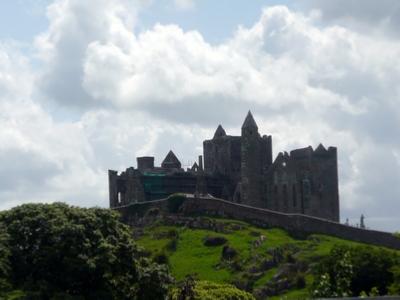 With this, we made our way to our abode for the next two nights in Cork. I must take a moment here to briefly discuss the food which, to this point, has been somewhat ignored. That is probably due to its lack of variation from night to night. While excellent in quality, it has been quite consistent in makeup. Each night we get a choice of a beef dish (usually some type of roast), a fish (often cod) and chicken with the odd pork or lamb thrown in, always served with a side of mashed potatoes. The starter has quite often included a salad with chicken or fish, or vegetable soup (quite good I might add) and desert a choice of cheesecake, profiteroles (small puff pastry balls filled with a creme anglaise) or ice cream and always served with a sliced strawberry atop unsweetened whipped cream. Now I am not complaining about the food, but it seems that the Irish have some ways to go to catch up with the Scots. However, I would not wish to lead you to believe that all is lost, for the pubs have excellent grub that is on par with the best Scottish fare not to mention excellent BEER.
With this, we made our way to our abode for the next two nights in Cork. I must take a moment here to briefly discuss the food which, to this point, has been somewhat ignored. That is probably due to its lack of variation from night to night. While excellent in quality, it has been quite consistent in makeup. Each night we get a choice of a beef dish (usually some type of roast), a fish (often cod) and chicken with the odd pork or lamb thrown in, always served with a side of mashed potatoes. The starter has quite often included a salad with chicken or fish, or vegetable soup (quite good I might add) and desert a choice of cheesecake, profiteroles (small puff pastry balls filled with a creme anglaise) or ice cream and always served with a sliced strawberry atop unsweetened whipped cream. Now I am not complaining about the food, but it seems that the Irish have some ways to go to catch up with the Scots. However, I would not wish to lead you to believe that all is lost, for the pubs have excellent grub that is on par with the best Scottish fare not to mention excellent BEER.
I have neglected to relate one event that happened at dinner on Thursday night. Alex and Linda announced to the group their betrothal. This came as a surprise to many of us though I must say it did my heart well to hear this news. Congratulations to the two of them!

St. Canice’s Cathedral & Killkenny Castle
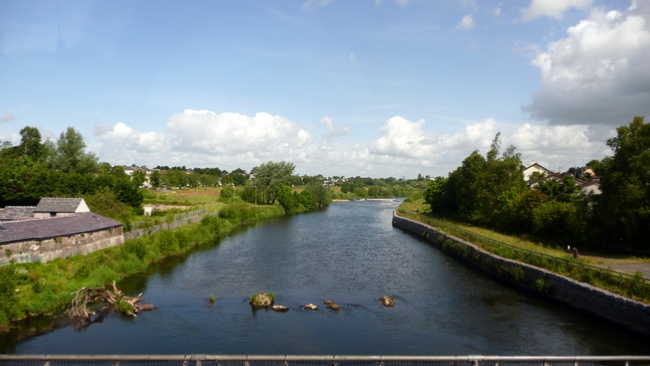

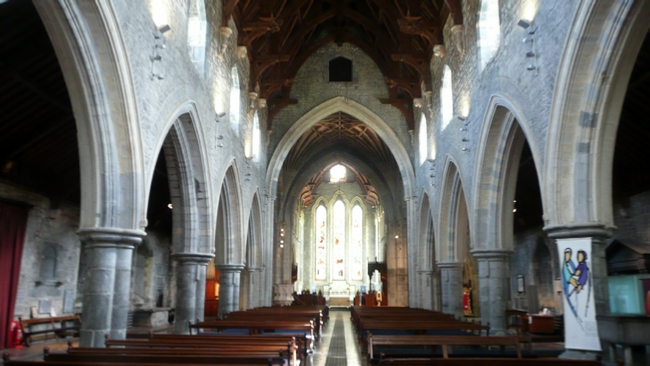
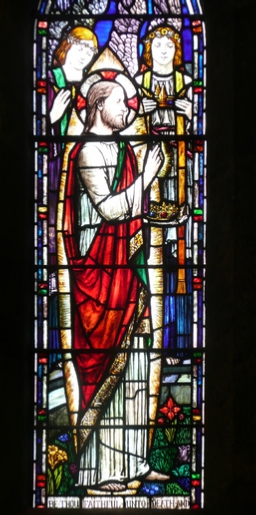

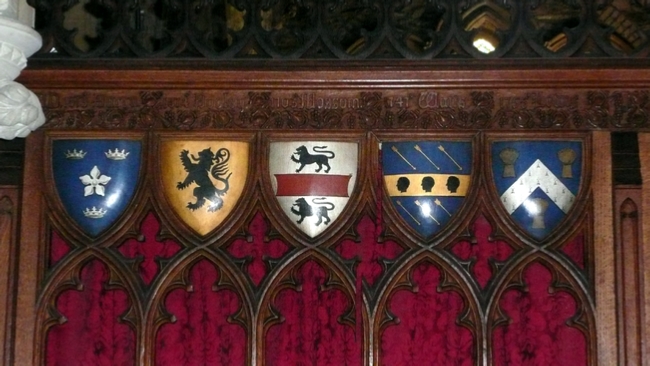

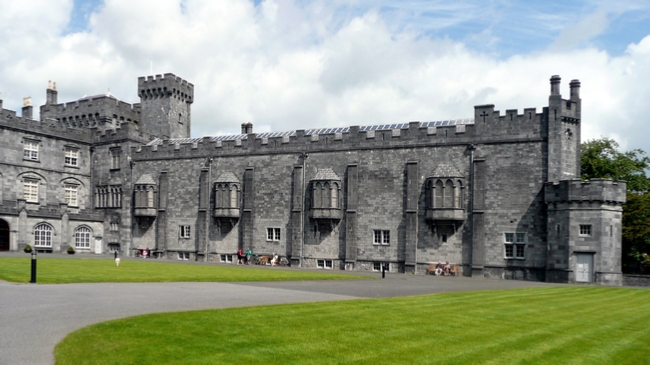
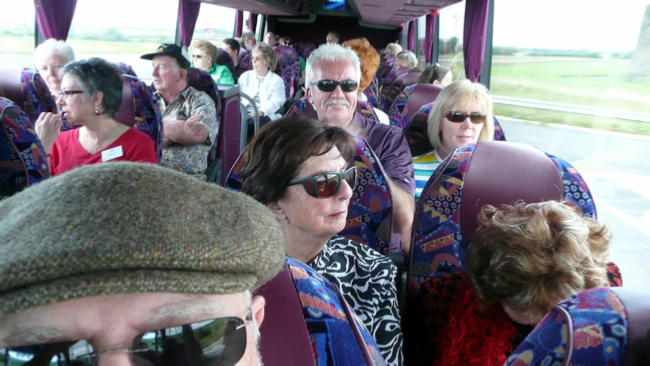
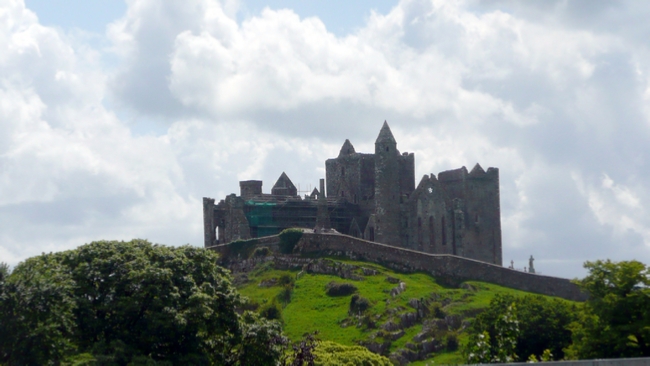
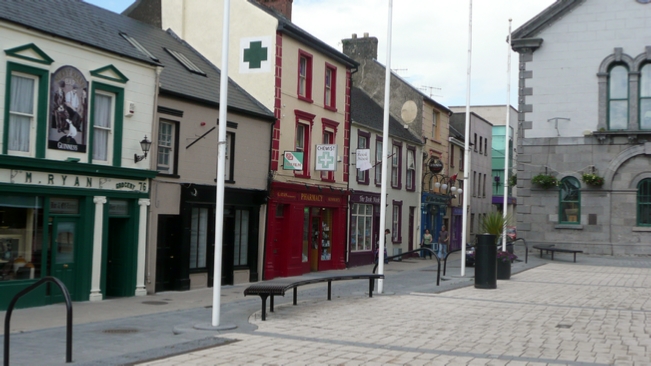
Our first stop was a visit to St. Canice’s Cathedral in Kilkenny, Co. Kilkenny. In the Irish it is Cill Chainnigh, which t
 ranslates as "Church of Cainneach", or Canice. As with many of the older churches in Ireland, St. Canice’s is actually Protestant and is the seat of the Anglican Bishop of Cashel and Ossory. Though these churches were constructed as houses of Catholic worship, they were taken over by the Protestants during the Reformation. When Catholicism once again became the Irish national religion, new Catholic churches and cathedrals were constructed. St. Patrick’s in Dublin is one of the few remaining ancient Catholic cathedrals.
ranslates as "Church of Cainneach", or Canice. As with many of the older churches in Ireland, St. Canice’s is actually Protestant and is the seat of the Anglican Bishop of Cashel and Ossory. Though these churches were constructed as houses of Catholic worship, they were taken over by the Protestants during the Reformation. When Catholicism once again became the Irish national religion, new Catholic churches and cathedrals were constructed. St. Patrick’s in Dublin is one of the few remaining ancient Catholic cathedrals.
St. Canice’s includes a 36 yard high bell tower. As in Glendalough, it is believed the tower was used as a watch-
As we approached the Cathedral, our coachmen, one Nigel Murray, related to us the tale of the Witch of Kilkenny which I will attempt to retell to you. Lady Alice, who had been thrice married, was married to Sir John le Poer. Her three previous husband all had one thing in common -
He sent the evidence to the Bishop of Ossary along with a letter from her step children accusing her of consorting with the devil. This being the time of the Holy Inquisition, she was quickly arrested along with others including her maid, Petronella de Meath. Lady Alice was able to make her way to England (her escape was not explained) where she ended her days in peace.
However, the Church demanded it’s pound of flesh and so chose poor Petronella to place on trial in her stead.
Well, on leaving St. Canice’s, we proceeded on to the wonderful Kilkenny Castle, in the Irish, Caisleán Chill Chainnigh. Located in Kilkenny, the castle was build in 1195 to control the River Nore. It was originally constructed by the Earl of Pembroke, but was sold to the Butler family in about 1381.
In the 20th century, upkeep of the castle became so great that the Butler family sold its contents for the sum of £6,000. Debts continued to mount and, in 1967, Arthur Butler, 6th Marquess and 24th Earl of Ormonde, sold the abandoned and deteriorating castle to the Castle Restoration Committee for £50. Easy come, easy go, as I always say.
From Kilkenny, we made our way onward to Cork. As we motored along we passed one of the may ruined towers built by the Normans in the 14th and 15th Century. These were built to help subdue the locals and just seem to spring out of the ground as we travel.
We made one final stop for a photo recon opportunity at the Rock of Cashel (in the Irish Carraig Phádraig), Co. Tiperarry. Also know as Cashel of the Kings, it was the seat of the kings for Munster for several hundred years until the Norman invasion. None of the original structures survive, the majority of the current castle dating from the 13th and 14th centuries.
Cashel is also known as St. Patrick’s Rock. Local lore has it that the original castle was built on a site know as the Devil’s Bit, a mountain about 30 km away. When St. Patrick banished the Devil from a cave, the rock was transported to its current location.
I have neglected to relate one event that happened at dinner on Thursday night. Alex and Linda announced to the group their betrothal. This came as a surprise to many of us though I must say it did my heart well to hear this news. Congratulations to the two of them!

 Additional photos
Additional photos
 To Day 6 - Cohb, Cork & Kinsale
To Day 6 - Cohb, Cork & Kinsale